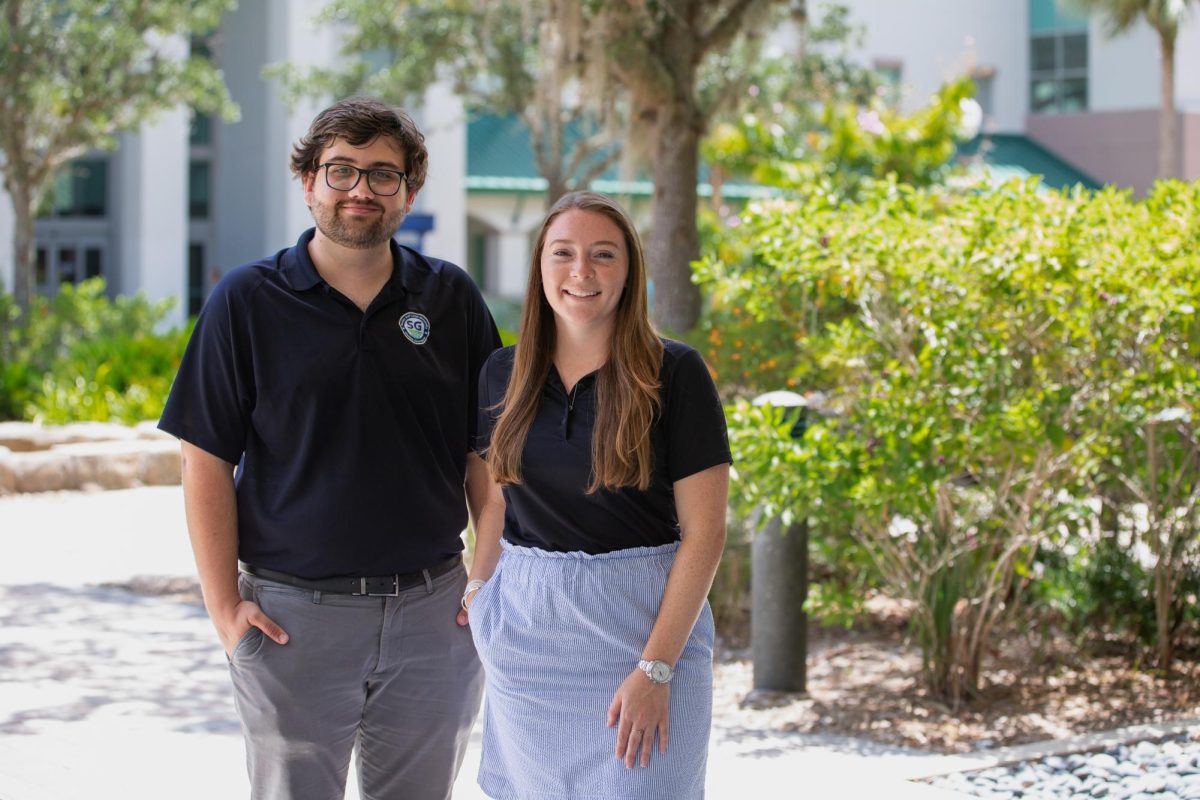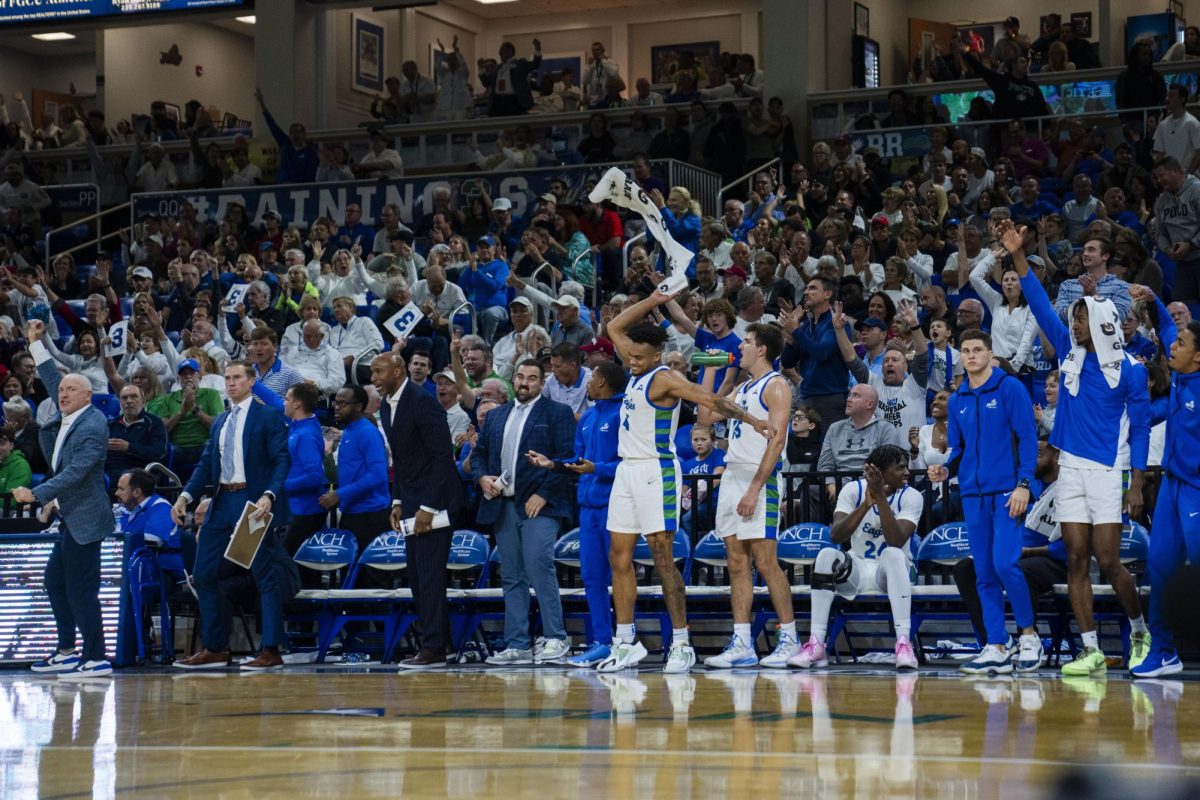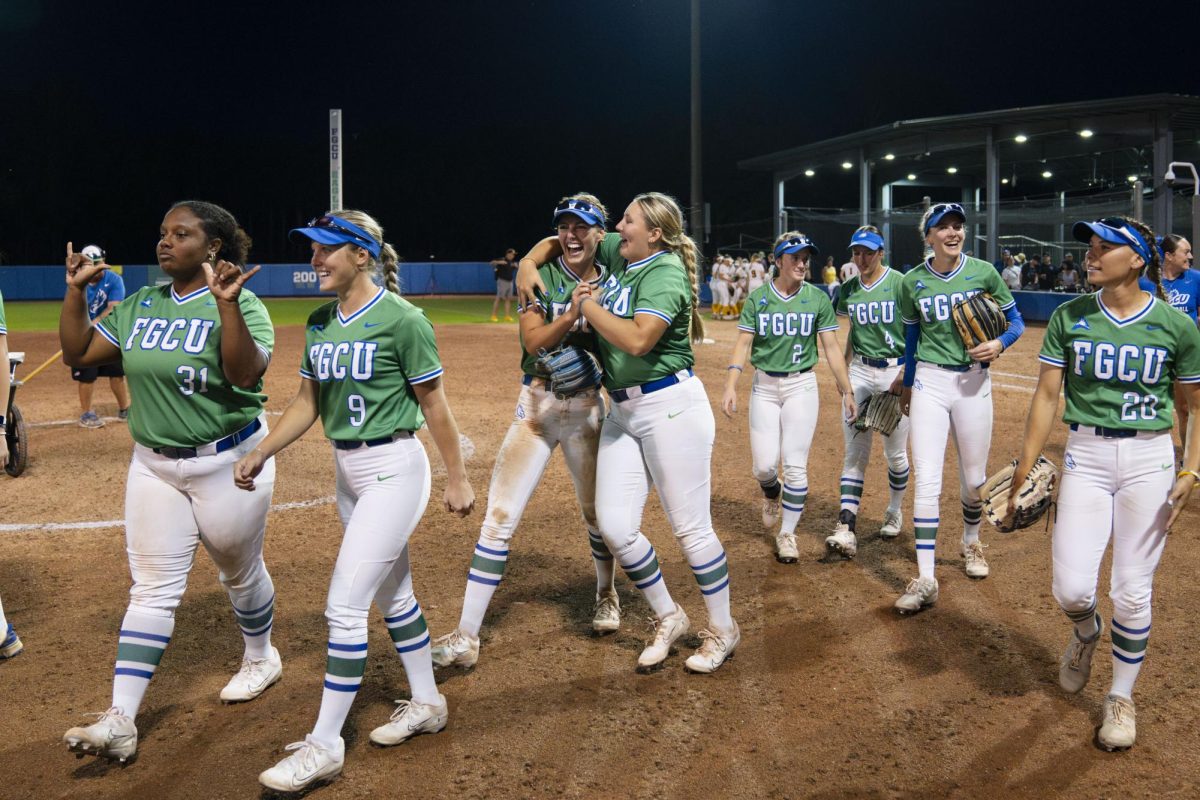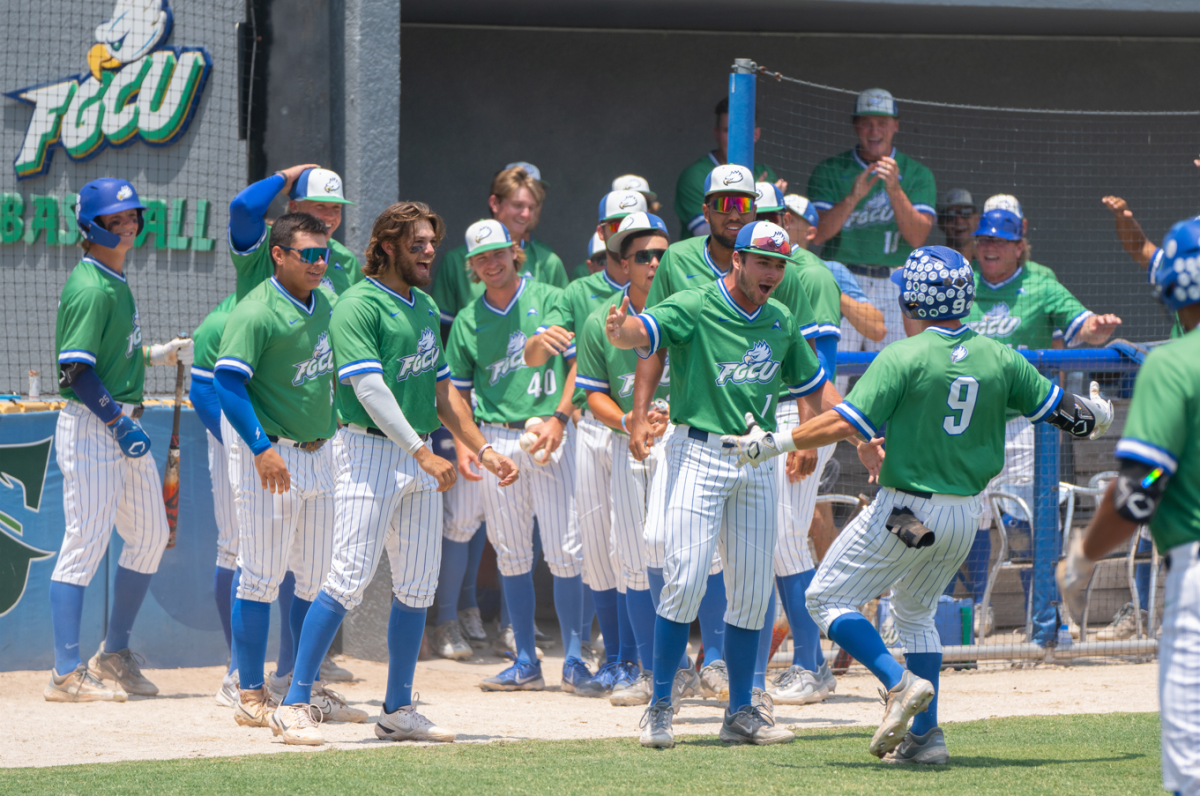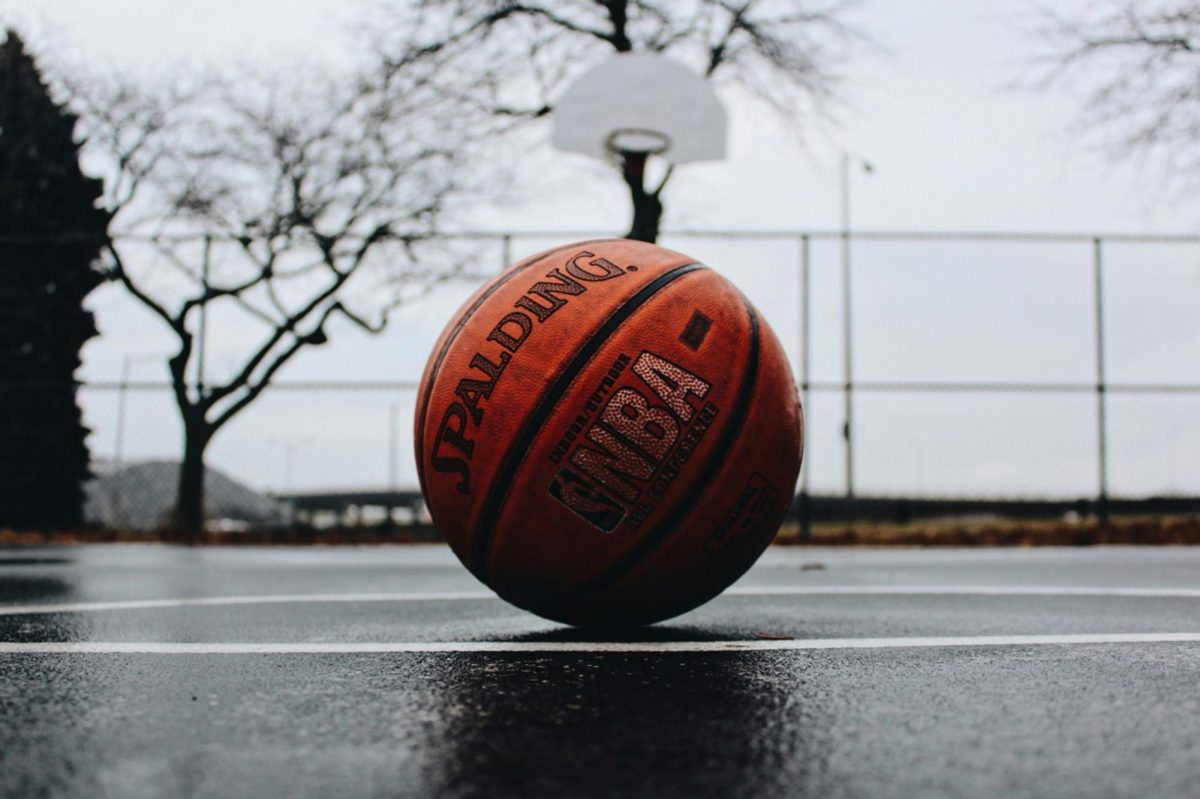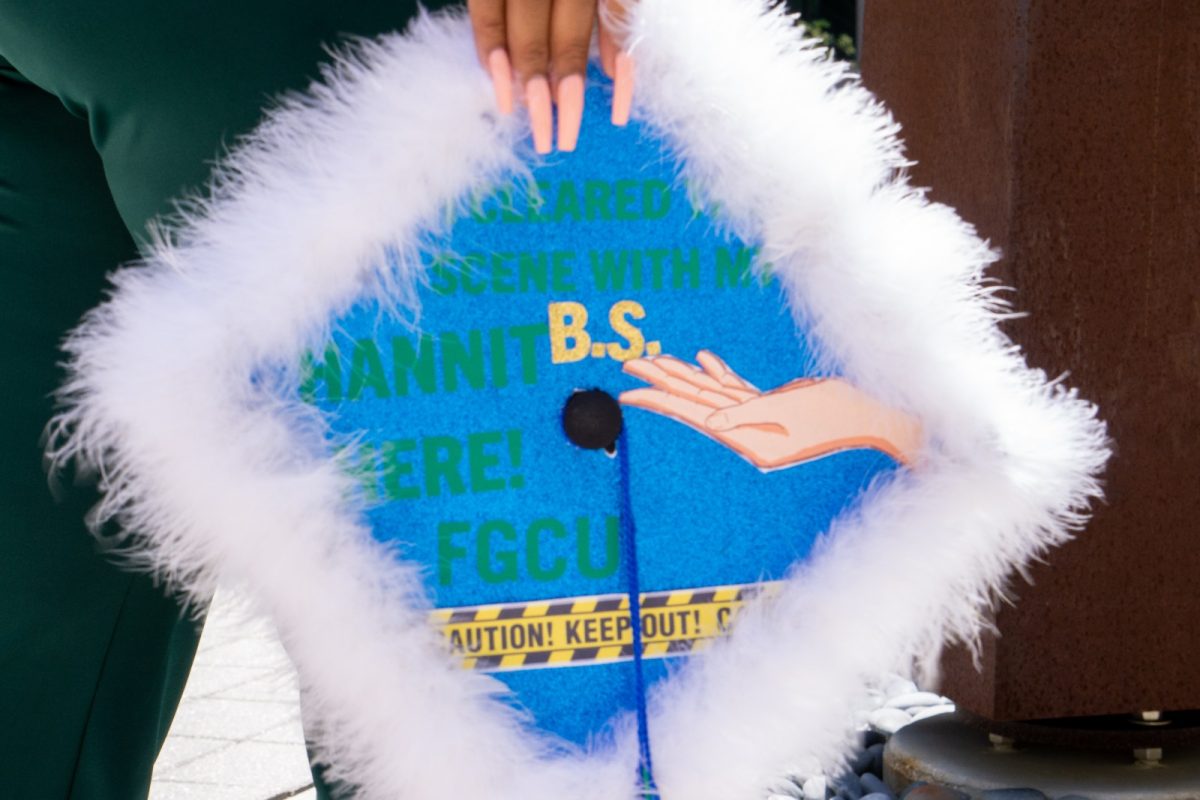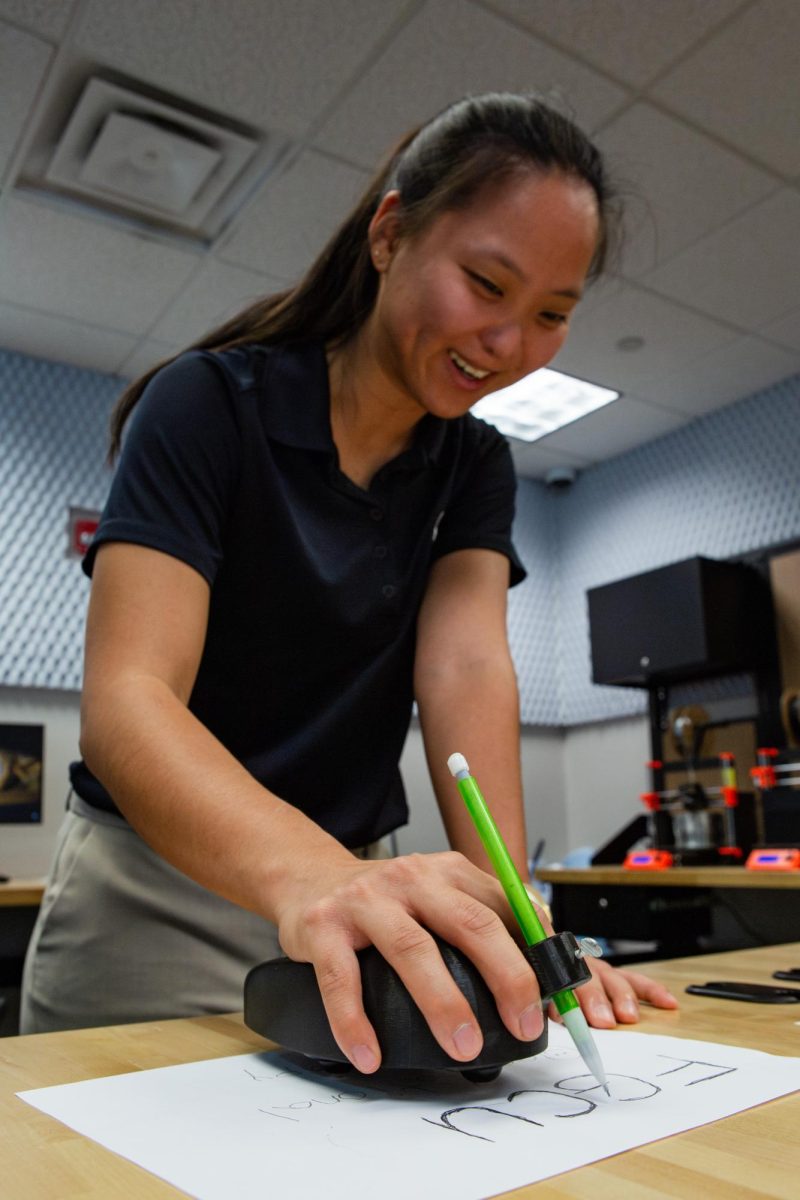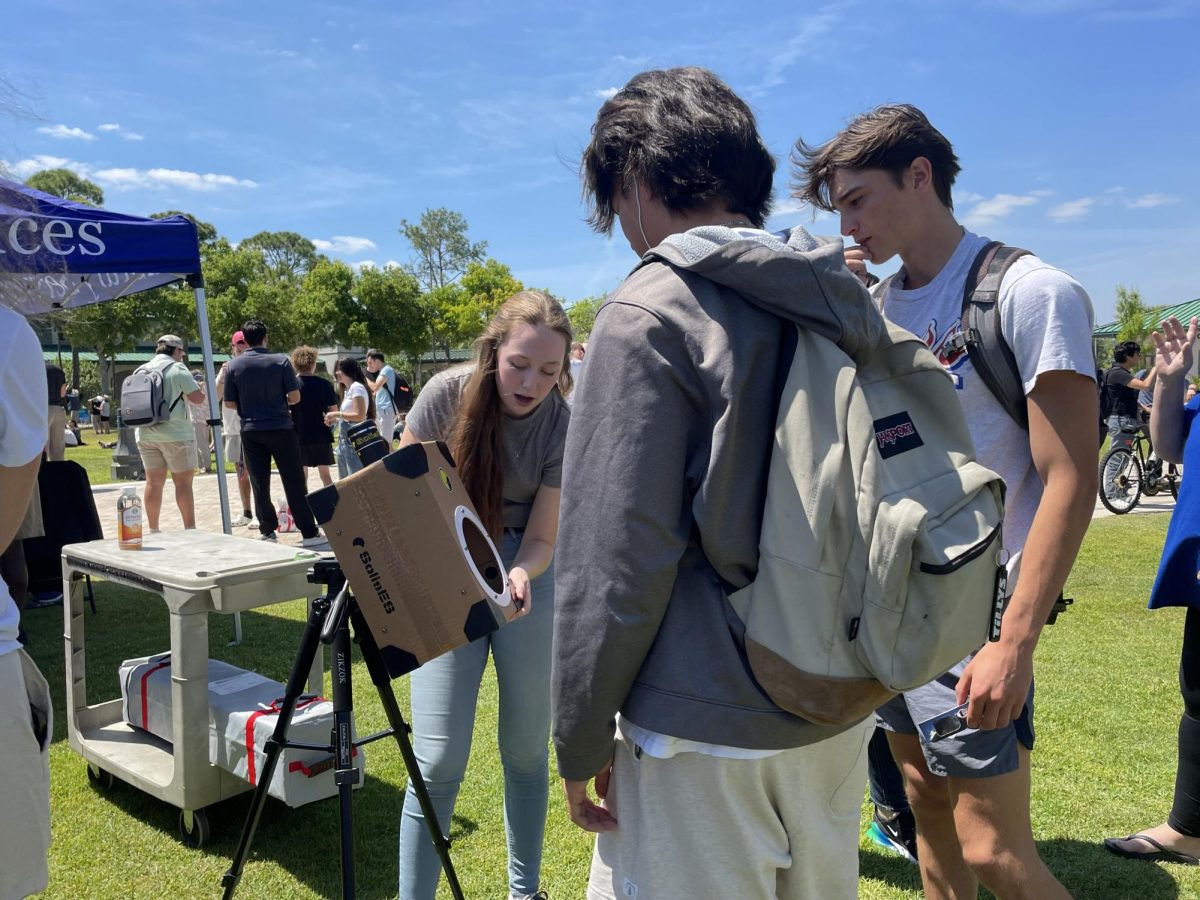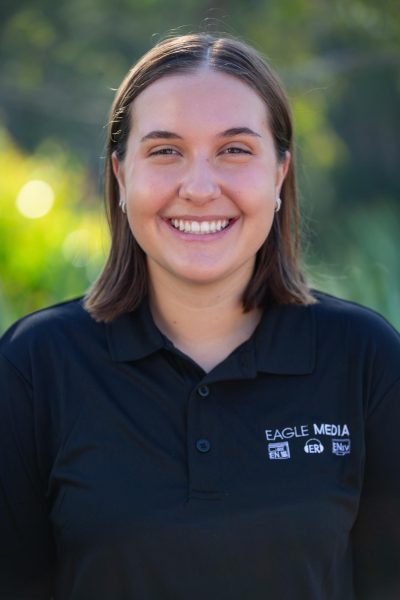3D printing is often used for things like little gadgets and figurines, but two FGCU graduate students are utilizing it for more.
Anna Millbourn and Courtney Welch, both second-year occupational therapy graduate students, have gained an interest in how 3D printers can be used to therapy’s advantage.
“3D printing is a great way to not only get assistive technology through just printing what designs are already out there but also being able to customize that for your client based on what they need,” Welch said.
For Millbourn, the path leading to occupational therapy was inevitable.
“My mom worked for a school for students with severe to profound special needs, so growing up, I was around that population a lot and I learned to really love working with that group,” Millbourn said.
Millbourn and Welch have used the 3D printer in the Bradshaw Library’s Makerspace while taking an assistive technology class this semester. The Makerspace is a new addition to the library that assists students with 3D printing, laser cutting, milling and Cricut cutting.
3D printing is a multi-step process. To begin, someone must create or find a 3D model of what you would like to print. Once they have their model, it needs to be processed through a specialized software known as slicing software. Once the model is processed, the file needs to be uploaded onto the printer which will then begin printing.

Once the model is printed, students can add post-processing features to the model. Post-processing can include removing any supports that are printed with the model and sanding to achieve a certain surface texture and quality.
The assistive technology course requires students to complete projects using different types of technology. Millbourn and Welch used 3D printing for both of their projects this semester and were the ones to reach out to the Makerspace staff.
According to Creative Commons Lab Coordinator Matthew Losey, there is no official collaboration between the Makerspace and the course, but he hopes for one in the future.
The first assignment was in conjunction with the Lee County School District. During the collaboration, students in the class went to a school and observed a student. They then had the opportunity to work with the school’s occupational therapist to find the best way to help the student.
Millbourn created a switch with her three classmates for this project. She used a free blueprint online for the actual switch but designed the plate through a computer software called Fusion 360. Switches are used by people with limited motor skills. For example, one can be used for communicating, playing with toys and using a computer. However, they can be up to $75 online, and the mounting plates along with the switch can be hundreds of dollars.
“The modification that we made with the 3D printer is we designed a plate that is compatible with GoPro mounting systems,” Millbourn said. “This is a much more cost-effective way of mounting a switch because the traditional name brand mounting systems that you see in assistive technology, like retail websites, can be hundreds of dollars, whereas GoPro mounts can attach to nearly any surface and they’re under $50.”
As 3D printing has become more accessible for students, Losey emphasizes the advantages of using this technology.
“3D printing allows you to fully customize the design you are trying to achieve, whereas buying something online you are generally constrained to the designs that they offer,” Losey said. “3D printing is also much more cost-effective once you have the machines up and running. Materials are very inexpensive and allow for cost-effective prototyping.”
In this class, students get to choose their assignments. Millbourn and Welch both chose to create a 3D-printed piece of assistive technology for a case study or for someone they knew.
Welch wanted to create a playing card holder for older adults who don’t have a tight grip. After researching, she found that most cardholders only have a single layer and are the same on both sides. Using a computer software called Blender, she designed a card holder that had a second layer, which provides room for more cards. The user has the option to attach a pop socket that screws on and off as well, which helps them get an easier grip on the cardholder and helps it stand upright on a table.

For this project, Millbourn used the 3D printer to create a writing aid. This tool is used by individuals who have difficulty writing for a variety of motor/neurological reasons. She redesigned it with the idea of incorporating castor wheels to provide less friction when writing. She also added a 10-degree angle that allows the user to lift the pencil without lifting the device off a piece of paper.
“We can use 3D printing for more than just, you know, board game pieces and whatnot, but we can use it in a way that is for all disciplines,” Welch said. “This is going to be a big thing in rehab, yes, but also in other professions as this emerging technology provides many opportunities for customized parts and products, especially with all of the designs that are already readily available online and the many programs that can be used to customize these designs or create your own.”


